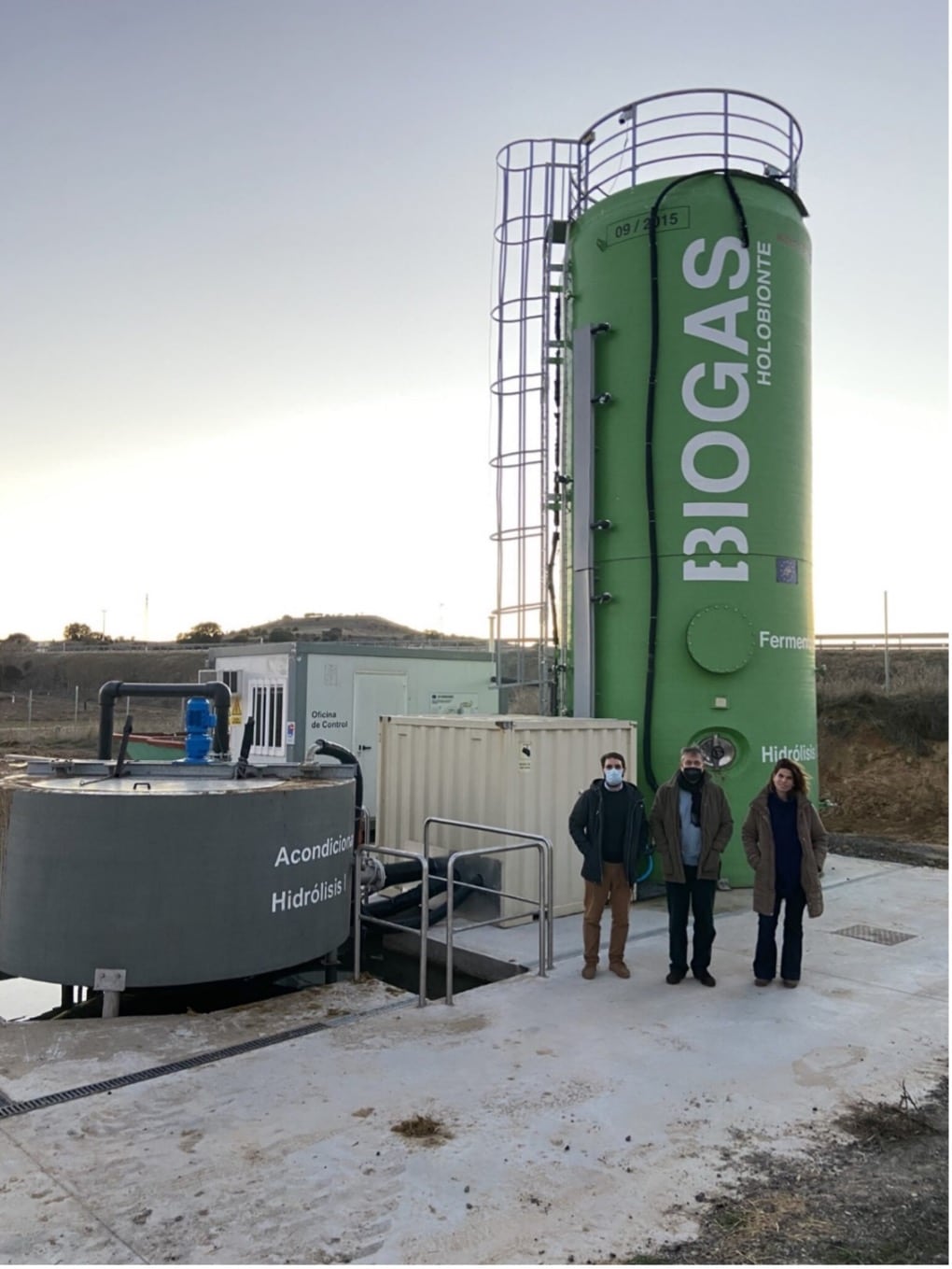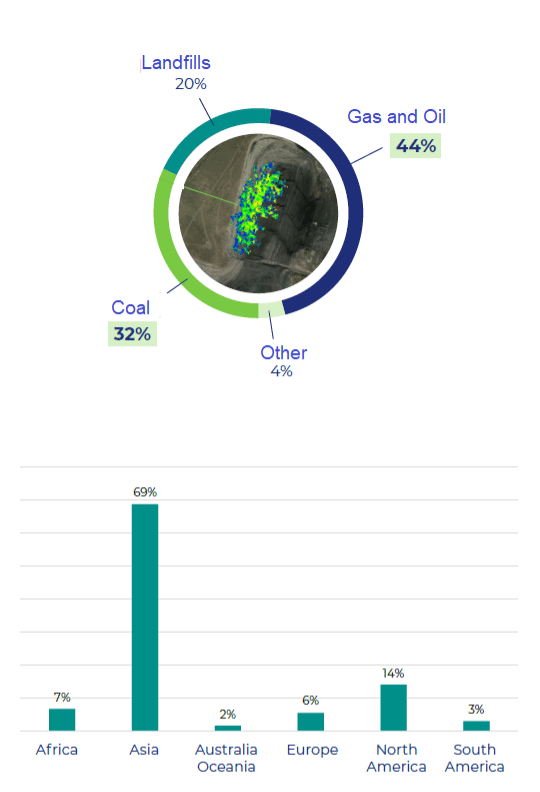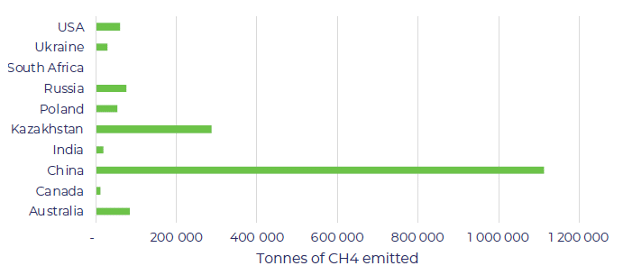
Biogas and independence from Russian gas: an assessment of action plans from Spain and Italy
The Spanish Council of Ministers approves the guidelines for promoting biogas in record time
Author: Mario A. Rosato
On 22nd March 2022, the Spanish Council of Ministers approved the guidelines on the development of the biogas sector (full text in Spanish here). A draft of the same had been submitted for public consultation in September 2021, receiving several suggestions from the Spanish trade associations, included in the final document. The conflict in Ukraine and the consequent increase in the prices of fossil fuels have prompted the European Commission to take an official position with its Communication to the European Parliament REPowerEU: common European action for safer, more sustainable and more affordable energy (texts in English of the communication and related annexes here). For several years the Spanish government has been trying to catch up on the delay in the development of renewable energies caused by previous governments. The war in Ukraine and the European thrusts have served to overcome the ideological discussions between the various parties, finding an agreement for the common good. This should be the norm in any democracy but, in a country that is culturally very similar to Italy, an agreement between parties based on scientific criteria is a rarity that constitutes news. In a nutshell, the guidelines just approved provide for:
- Exceeding 10.4 TWh, i.e., multiplying current biogas production by 3.8 by 2030, strengthening the circular economy and stopping the exodus of the rural population through the creation of new supply chains. It is expected to avoid emitting about 2.1 million tons of CO2 equivalent per year into the atmosphere.
- Create a system of guarantees of origin for renewable gas, which is already underway, with the possibility of setting objectives and emission quotas for developing the market.
- Activate a line of subsidies to implement biogas projects, worth 150 million euros, to be paid for by the Recovery, Transformation and Resilience Plan (PRTR).
The Spanish strategy does not neglect any potentially fermentable feedstock nor does it promote any given model: agricultural waste, OFMSW and sludge will be used to produce electricity, industrial heat or traction biomethane. It is important to note that the Spaniards included in the plan the direct production of heat from biogas, to consume it in the digestion plant itself or small district heating networks. Thermal use is the most logical and economical technology for biogas, but it has never been considered by the production model imposed in Europe and adopted in Italy. In Italy, electricity generation and upgrading to biomethane are still the only technologies with the right to cash subsidies, although they are more expensive and complex.
The Spanish plan to incentivize biogas includes 45 measures, divided into five lines of action:
- Regulatory tools. A future system for the guarantee of origin will allow consumers to distinguish whether they purchase energy from biogas or natural gas. The simplification of the authorization procedures is envisaged but, most importantly, the homogenization of the interpretations made by local authorities – causing delays in Spain as in Italy – in particular concerning the sustainable management of digestate as fertilizer. On this last point, the reading of the text allows us to glimpse a somewhat Gattopardesque ([i]) approach: the Spanish laws are just listed, but they contain more or less the same ideological flaws of the infamous Effluents Decree ([ii]). Furthermore, the concept of “end of waste” is cited, but it is unclear what the simplification will be. As in Italy, the agricultural use of digestate from sewage sludge will remain forbidden.
- Sectoral instruments. They establish the possibility of defining annual targets for biogas sales or consumption volumes, mandatory quotas – as already in force, for example, with liquid biofuels. It is proposed to incentivize the production of biogas for in situ consumption, for example, as process heat in the agri-food industry or the waste treatment process, or in vehicle fleets. Following the hydrogen ideology of the Green Deal ([iii]) and the anti-biomethane ideology of the Spanish right wing, the possibility of injecting biomethane into the grid or converting biogas into hydrogen is mentioned, as long as it proves economically viable.
- Economic instruments. They propose to divert existing aid funds (national programs) to finance the innovation and technological development of biogas and exploit the Recovery, Transformation and Resilience Plan (PRTR) too. Apparently, the latter already envisaged aid actions for the biogas sector, so its inclusion in the new Guidelines would seem rather a reminder or a kind of harmonization of measures.
- Cross-cutting tools. The Guidelines suggest prioritising biogas projects in disadvantaged areas and introducing it into public procurement specifications. The study of anaerobic digestion technology will be included in the technical education subjects. Citizen awareness campaigns will be organized to improve the quality of the separate waste collection. Facilitating the creation of rural energy communities and working groups within agricultural cooperatives will speed up their implementation. The participation and coordination of research projects financed by the European Union are encouraged.
- Drive research and development. Promote research on techniques for reducing emissions of contaminating gases that are not greenhouse gases, promote demonstration projects on the thermal use of biogas in industry and agriculture or innovation on less mature digestion technologies. From a citizen’s perspective, it is unclear what the relationship of biogas with “non-greenhouse gases” is, which these gases are, and why some of the resources allocated to biogas promotion should be diverted to this small research niche. Considering that about 60% of the biomass (vegetable) fed to the digester leaves it undigested, the priority of the research should be to increase the digestion efficiency at all costs ([iv]).
The Guidelines of the Spanish government provide us with some topics for further reflection:
a) Although Spain is a country with a smaller NG network and less dependent on Russian gas than Italy, the “anti- biogas” ideology weighs less among the Spanish parties. The fear of war made it possible to agree on a common policy in a relatively short time despite the extreme fragmentation of political forces and regional parochialisms that characterise our Iberian cousins.
b) The institutional attitude towards methane is more pragmatic – to put it mildly – in Spain than in Italy. For example, the regasification plant project in the port of Mugardos (A Coruña) was exempted from EIA (environmental impact assessment). In Italy, on the contrary, the opposition to the regasification plant in the Port of Trieste has demonstrated ideological myopia and parochialism of the Italian political class. For the then regional president Serracchiani “it is incompatible with the Master Plan”; for the then Minister Calenda “it is not strategic”; for the regional councillor Vito it is “oversized for the needs of the Region”; and for the deputy Prodani the EIA had to be revoked due to a series of bureaucratic quibbles. The conspiracy theories about the project are those common to the “committees for no” and the M5S. As an example of conspiracy paranoia, the author of this article hid behind a nickname.
In a civilized country, a strategic infrastructure like a regasification plant should be evaluated logically and rationally, from the point of view of the long-term national interest. Neither with the conspiracy-parochial attitude of Friuli Venezia Giulia nor with the uncritical acceptance of Galicia.
c) The Spanish plan acknowledges and proposes to exploit the environmental advantages of anaerobic digestion. The objective of partial self-sufficiency on methane is therefore not an end in itself but included in a broader circular economy perspective. In Italy, on the other hand, we find an opposite example in the Autonomous Province of Trento, which plans to install an NG grid in 47 mountain municipalities, which would be perfectly self-sufficient with modern and rational management of forest biomass. As reported by the President of FIPER (Italian Federation for Renewable Energy), Walter Righini, in a press release:
“In our country, the energy-programmable agroforestry complex would be able, if properly oriented, to avoid the importation of at least 13 billion cubic meters of natural gas, all with a very important financial impact on the national economic system. Indeed, this is a value equal to 35-40% of the gas imports from Russia recorded in 2021, which today translates into 27-40 billion euros/year.
Among the points highlighted by President Righini in his speech, there was also the importance of encouraging the development of biomethane for transport.”
d) As regards the question of greenhouse gases, it is evident how politicians (and not only those of Rome and Madrid) bring up the argument to defend their positions, without however having any scientific evaluation criteria. We have already reported in other articles the conceptual errors in the European doctrine of clean hydrogen ([v]) and also those of the anti-biogas political groups ([vi]). The commonplace is the demonization of conventional agriculture and livestock, guilty of methane emissions. The irrefutable reality is quite different. According to the data collected by the European GHG satellite the most technologically advanced tool for identifying methane emissions into the atmosphere, the contribution of agriculture and livestock is irrelevant. The main emitters of methane are the fossil fuel extraction industries (oil, natural gas and coal), followed by landfills (Figure 1). Europe’s emissions account for very little in the global balance being China the main emitter of methane, followed at a great distance by the USA and Russia (Figure 2).

Figure 1: methane emissions into the atmosphere by product sector. GHGsat surveys, 2021 report.

Figure 2: Atmospheric methane emissions related to the coal mining industry. GHGsat measurements, 2021 report. Four mines in China and one opencast in Kazakhstan emit about the same as all other coal mines in the rest of the world.
Click here to register to the WBA Training: Biogas Upgrading Technology/Opportunities – in English and Spanish languages hosted by Mario A. Rosato
Author’s personal reflections
Autarchy was (perhaps) a valid philosophical-political concept at the time of the Cyrene philosophers, but it is utopic for an industrialised and interconnected society like that of the 21st century. However, forgetting the unscientific illusions of the fascist era, it is undeniable that some degree of self-sufficiency -based on circular economy criteria- and a policy of diversification of resources -based on common sense- are fundamental to guarantee a nation’s energy resilience. By overcoming party ideologies promptly to respond to the energy crisis in their country, Spanish politics has given us a small lesson in pragmatism. Meanwhile, the Italian political class continues to waste time debating the moral and ethical implications of supplying or not supplying arms to Ukraine, or whether devoting 2% of GDP to military spending will anger the Pope or whether Senator A or the deputy B are “Putinians”. According to the Savoyard philosopher Joseph De Maistre (1753-1821), “Every nation has the government it deserves”. But what have we Italians done to deserve a government of Crocian ([vii]) pseudo-philosophers, for whom emotional reactions are more important than logic or science?
Notes to the English translation
[i] A term widely employed in Italian political journalism, quoting a scene of a classical film, Il Gattopardo. Ayoung Sicilian prince tells his uncle that he is joining the Republican Revolution for the sake of the family, to ensure that “everything changes in such a way that everything remains unchanged”. In the end the aristocrat, nicknamed Gattopardo because of the leopard in the family’s coat of arms, becomes a Republican Senator and continues his semi-feudal style of life. [ii] Article in Italian: The situation on the Effluents Decree https://agronotizie.imagelinenetwork.com/bio-energie-rinnovabili/2016/06/24/il-punto-della-situazione-sul-decreto-effluenti/49292 [iii] Article in Italian: See Hydrogen from biomethane, biomethane from hydrogen [iv] Article in Italian: Digestate re -digestion and thermophilic digestion https://agronotizie.imagelinenetwork.com/bio-energie-rinnovabili/2022/03/17/ridigestione-del-digestato-e-digestione-termofila/74353 [v] Articles in Italian: Hydrogen from biomass and Green Deal https://agronotizie.imagelinenetwork.com/bio-energie-rinnovabili/2020/07/20/idrogeno-da-biomasse-e-green-deal/67467; The return of biohydrogen https://agronotizie.imagelinenetwork.com/bio-energie-rinnovabili/2020/12/14/il-ritorno-del-bioidrogeno/68868 [vi] Articles in Italian: The no-biogas committees and the no-biogas and biomass vademecum https://agronotizie.imagelinenetwork.com/bio-energie-rinnovabili/2017/04/28/i-quotcomitati-del-noquot-ed-il- vademecum-biogas-e-biomasse/53738 ; What future for bioenergy in the next legislature? https://agronotizie.imagelinenetwork.com/bio-energie-rinnovabili/2018/04/04/quale-futuro-per-le-bioenergie -in-next-term / 58144 [vii] Reference to the ideology of Benedetto Croce, an Italian politician and anthroposophic philosopher, who defined the Nobel laureate Enrico Fermi as “a shoddy mechanic”. In 2021, the Italian parliament voted almost unanimously (only one vote against) on a law recognising the anthroposofic pseudo-science of biodynamics as an equivalent to biological agriculture.
Click here to register to the WBA Training: Biogas Upgrading Technology/Opportunities – in English and Spanish languages hosted by Mario A. Rosato

